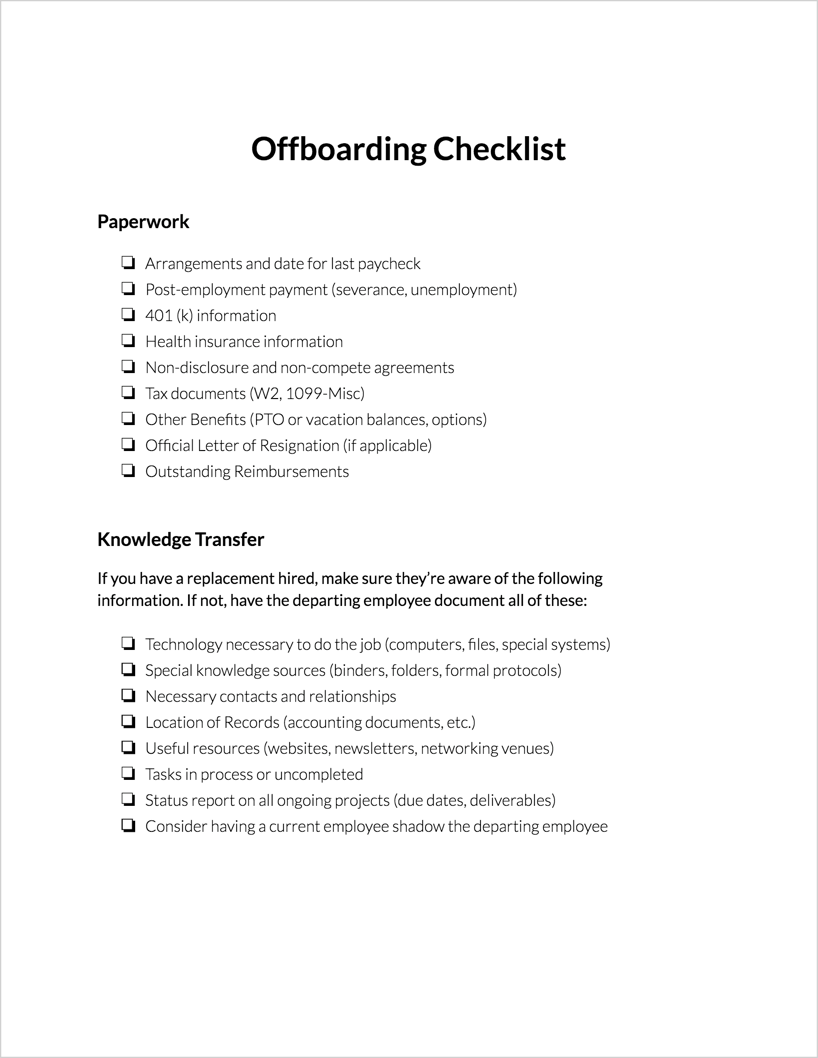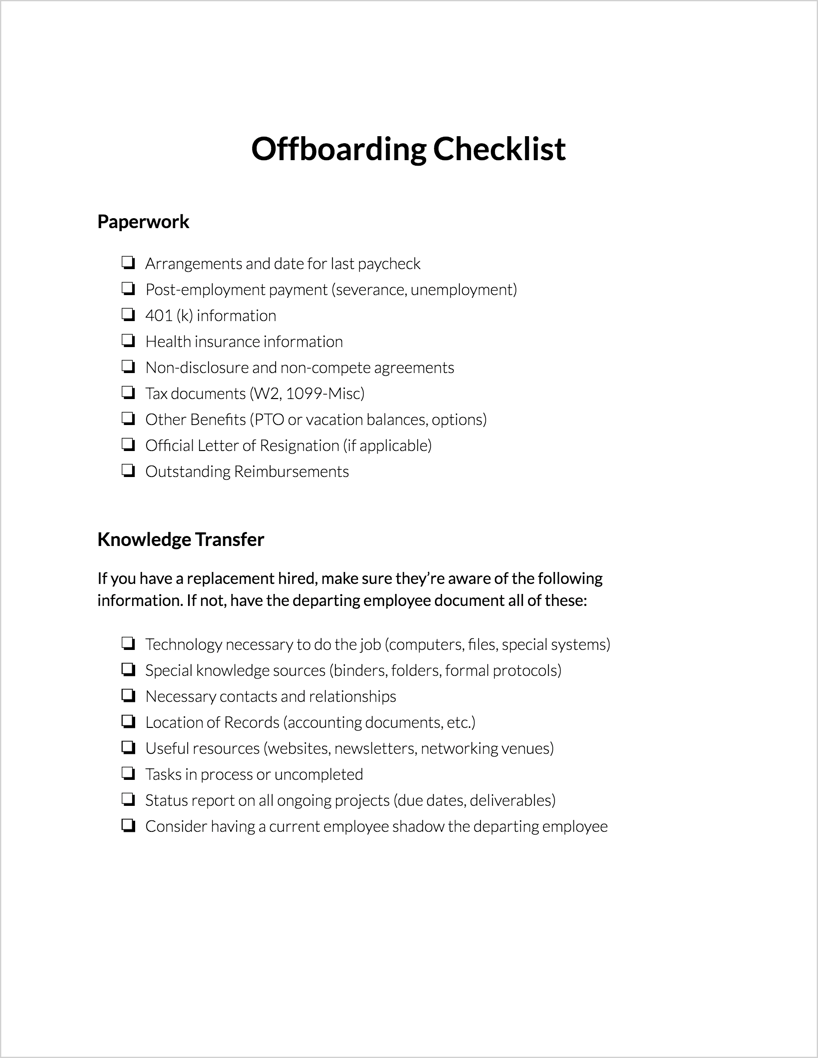Offboarding Checklist for Download
Learn about the offboarding process and best practices to make the employee transition as seamless and thorough as possible. Worried about forgetting something? Here’s a free offboarding checklist to make sure you have all your ducks in a row.*

What is Offboarding?
Offboarding is the process of transitioning employees out of an organization. An organized Offboarding process should take place whether the employee leaves voluntarily or involuntarily.
Why is Offboarding important?
Today more than ever, bring smart about your Offboarding procedures can pay big dividends for your company. Why should you be focused when it comes to Offboarding?
- To keep intellectual property within your organization. Employees are obviously not allowed to take physical items when they leave. But a good offboarding strategy can make sure they don’t take proprietary knowledge either.
- To have employees leave with a positive feeling. This goal has become increasingly important in recent years, as employees are increasingly able to post reviews of your company on social media. Accruing negative reviews can hurt future hiring. Good offboarding can avoid those.
- To get useful information about your company. Employees – while actually working for a company – often keep their opinions about that company to themselves. But when they’re leaving, they’re can be more open. A good exit interview can be a great way to get your employees’ honest thoughts and ideas about the company.
- There are often compliance protocols you are required (by law!) to fulfill. Ignoring these can open you up to legal action.
Offboarding Process
The offboarding process generally involves four steps.
-
Prepare Paperwork
While not the most exciting part of a job, when employees leave, there’s usually lots of paperwork to complete. There’s financial, 401(k), and health care information, there’s often an official letter of resignation, there are non-disclosure and non-compete agreements, and there are tax documents. Having a good checklist in place (like ours below!) can make this part of the job less cumbersome.
-
Transfer knowledge
Before the employee leaves, make sure that there’s a process in place for documenting his/her work and training his or her successor. This can be especially important if the employee has a specialized job that requires less familiar knowledge to accomplish. Make sure the employee leaves you information about the systems they use, the files necessary to do their job, and their list of important contacts.
-
Exit interview
This is one of the most important parts of offboarding. If done right, it can gain you important information about your company and leave your employee with a good feeling about the company. Let the employee know you value their opinion, and have them answer questions like the following:
– What about your job worked well? What didn’t?
– Are there resources you didn’t have that would have helped?
– What are your thoughts on your manager? What would you tell your manager, anonymously, that could help them do their job?
– Would you recommend this company to a friend? Why or why not?
-
Recover assets
This usually happens on the employee’s last day. Collect their keys, badges, IDs, computers, etc. Afterwards be sure to change employee passwords and remove their accounts from your systems. These things are also in our checklist.
Offboarding Best Practices
Best practices for offboarding certainly involve making sure all paperwork and administrative details get covered on your end (that’s covered in our checklist). But they also should be about using the offboarding process to improve your company.
-
Get information from your employee
Use your exit interview to help you with future hiring. What can you do to make the position better for the next person who occupies it? What practices can you change? How would the employee recommend advertising the job?
-
Be clear about non-disclosure and non-compete agreements
The last thing you want is for your ex-employee to take your proprietary secrets elsewhere. Make sure they know the terms under which they’re leaving.
-
Provide knowledge about finances, health care, and taxes
All of these things are complicated. Give your employee the resources necessary to move their 401(k) plans and health care, to receive their final paycheck, to collect unemployment if applicable, and to contact your company if anything goes wrong.
-
Keep your employee in the loop
Many companies are starting to think of ex-employees as “alumni,” and are committed to keeping them in the family even after they leave. Let your employee know that (assuming they’re not leaving under bad circumstances) there’s always a home for them at your company.
Offboarding Checklist
Here’s a free offboarding checklist that’s easy to use and share.*
To use the offboarding checklist template:
- Download the template
- Open up the document in MS Word or Google Docs
- Edit the sections that are relevant to your organization
- Save the document under a new name
- Review the offboarding checklist with your HR or legal specialist
- Print the offboarding checklist to use!
*This offboarding checklist does not constitute legal advice. Please work with a legal or HR expert, as employment laws may vary country to country and state to state.





